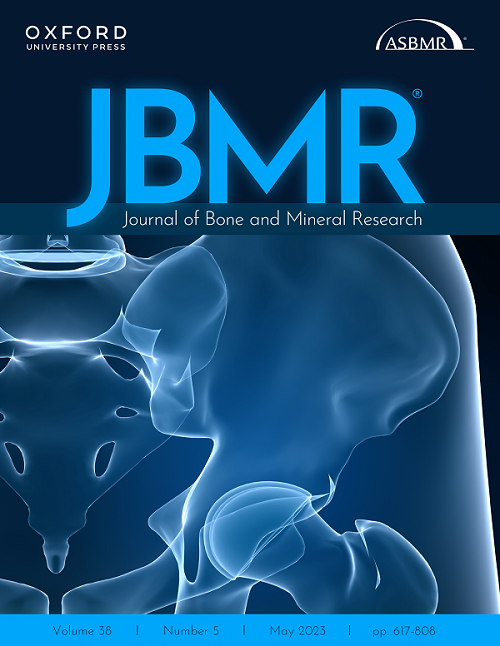下载PDF
{"title":"Wnt1通过促进骨折痂骨形成促进骨折愈合","authors":"Melanie Haffner-Luntzer, Deniz Ragipoglu, Mubashir Ahmad, Astrid Schoppa, Lena Steppe, Verena Fischer, Julia Luther, Timur Yorgan, Ernesto Bockamp, Michael Amling, Thorsten Schinke, Anita Ignatius","doi":"10.1002/jbmr.4797","DOIUrl":null,"url":null,"abstract":"<p>Despite considerable improvement in fracture care, 5%–10% of all fractures still heal poorly or result in nonunion formation. Therefore, there is an urgent need to identify new molecules that can be used to improve bone fracture healing. One activator of the Wnt-signaling cascade, Wnt1, has recently gained attention for its intense osteoanabolic effect on the intact skeleton. The aim of the present study was to investigate whether Wnt1 might be a promising molecule to accelerate fracture healing both in skeletally healthy and osteoporotic mice that display a diminished healing capacity. Transgenic mice for a temporary induction of Wnt1 specifically in osteoblasts (Wnt1-tg) were subjected to femur osteotomy. Non-ovariectomized and ovariectomized Wnt1-tg mice displayed significantly accelerated fracture healing based on a strong increase in bone formation in the fracture callus. Transcriptome profiling revealed that Hippo/yes1-associated transcriptional regulator (YAP)-signaling and bone morphogenetic protein (BMP) signaling pathways were highly enriched in the fracture callus of Wnt1-tg animals. Immunohistochemical staining confirmed increased activation of YAP1 and expression of BMP2 in osteoblasts in the fracture callus. Therefore, our data indicate that Wnt1 boosts bone formation during fracture healing via YAP/BMP signaling both under healthy and osteoporotic conditions. To further test a potential translational application of Wnt1, we applied recombinant Wnt1 embedded into a collagen gel during critical-size bone-defect repair. Mice treated with Wnt1 displayed increased bone regeneration compared to control mice accompanied by increased YAP1/BMP2 expression in the defect area. These findings are of high clinical relevance because they indicate that Wnt1 could be used as a new therapeutic agent to treat orthopedic complications in the clinic. © 2023 The Authors. <i>Journal of Bone and Mineral Research</i> published by Wiley Periodicals LLC on behalf of American Society for Bone and Mineral Research (ASBMR).</p>","PeriodicalId":185,"journal":{"name":"Journal of Bone and Mineral Research","volume":"38 5","pages":"749-764"},"PeriodicalIF":5.1000,"publicationDate":"2023-03-09","publicationTypes":"Journal Article","fieldsOfStudy":null,"isOpenAccess":false,"openAccessPdf":"https://onlinelibrary.wiley.com/doi/epdf/10.1002/jbmr.4797","citationCount":"0","resultStr":"{\"title\":\"Wnt1 Boosts Fracture Healing by Enhancing Bone Formation in the Fracture Callus\",\"authors\":\"Melanie Haffner-Luntzer, Deniz Ragipoglu, Mubashir Ahmad, Astrid Schoppa, Lena Steppe, Verena Fischer, Julia Luther, Timur Yorgan, Ernesto Bockamp, Michael Amling, Thorsten Schinke, Anita Ignatius\",\"doi\":\"10.1002/jbmr.4797\",\"DOIUrl\":null,\"url\":null,\"abstract\":\"<p>Despite considerable improvement in fracture care, 5%–10% of all fractures still heal poorly or result in nonunion formation. Therefore, there is an urgent need to identify new molecules that can be used to improve bone fracture healing. One activator of the Wnt-signaling cascade, Wnt1, has recently gained attention for its intense osteoanabolic effect on the intact skeleton. The aim of the present study was to investigate whether Wnt1 might be a promising molecule to accelerate fracture healing both in skeletally healthy and osteoporotic mice that display a diminished healing capacity. Transgenic mice for a temporary induction of Wnt1 specifically in osteoblasts (Wnt1-tg) were subjected to femur osteotomy. Non-ovariectomized and ovariectomized Wnt1-tg mice displayed significantly accelerated fracture healing based on a strong increase in bone formation in the fracture callus. Transcriptome profiling revealed that Hippo/yes1-associated transcriptional regulator (YAP)-signaling and bone morphogenetic protein (BMP) signaling pathways were highly enriched in the fracture callus of Wnt1-tg animals. Immunohistochemical staining confirmed increased activation of YAP1 and expression of BMP2 in osteoblasts in the fracture callus. Therefore, our data indicate that Wnt1 boosts bone formation during fracture healing via YAP/BMP signaling both under healthy and osteoporotic conditions. To further test a potential translational application of Wnt1, we applied recombinant Wnt1 embedded into a collagen gel during critical-size bone-defect repair. Mice treated with Wnt1 displayed increased bone regeneration compared to control mice accompanied by increased YAP1/BMP2 expression in the defect area. These findings are of high clinical relevance because they indicate that Wnt1 could be used as a new therapeutic agent to treat orthopedic complications in the clinic. © 2023 The Authors. <i>Journal of Bone and Mineral Research</i> published by Wiley Periodicals LLC on behalf of American Society for Bone and Mineral Research (ASBMR).</p>\",\"PeriodicalId\":185,\"journal\":{\"name\":\"Journal of Bone and Mineral Research\",\"volume\":\"38 5\",\"pages\":\"749-764\"},\"PeriodicalIF\":5.1000,\"publicationDate\":\"2023-03-09\",\"publicationTypes\":\"Journal Article\",\"fieldsOfStudy\":null,\"isOpenAccess\":false,\"openAccessPdf\":\"https://onlinelibrary.wiley.com/doi/epdf/10.1002/jbmr.4797\",\"citationCount\":\"0\",\"resultStr\":null,\"platform\":\"Semanticscholar\",\"paperid\":null,\"PeriodicalName\":\"Journal of Bone and Mineral Research\",\"FirstCategoryId\":\"3\",\"ListUrlMain\":\"https://onlinelibrary.wiley.com/doi/10.1002/jbmr.4797\",\"RegionNum\":1,\"RegionCategory\":\"医学\",\"ArticlePicture\":[],\"TitleCN\":null,\"AbstractTextCN\":null,\"PMCID\":null,\"EPubDate\":\"\",\"PubModel\":\"\",\"JCR\":\"Q1\",\"JCRName\":\"ENDOCRINOLOGY & METABOLISM\",\"Score\":null,\"Total\":0}","platform":"Semanticscholar","paperid":null,"PeriodicalName":"Journal of Bone and Mineral Research","FirstCategoryId":"3","ListUrlMain":"https://onlinelibrary.wiley.com/doi/10.1002/jbmr.4797","RegionNum":1,"RegionCategory":"医学","ArticlePicture":[],"TitleCN":null,"AbstractTextCN":null,"PMCID":null,"EPubDate":"","PubModel":"","JCR":"Q1","JCRName":"ENDOCRINOLOGY & METABOLISM","Score":null,"Total":0}
引用次数: 0
引用
批量引用


